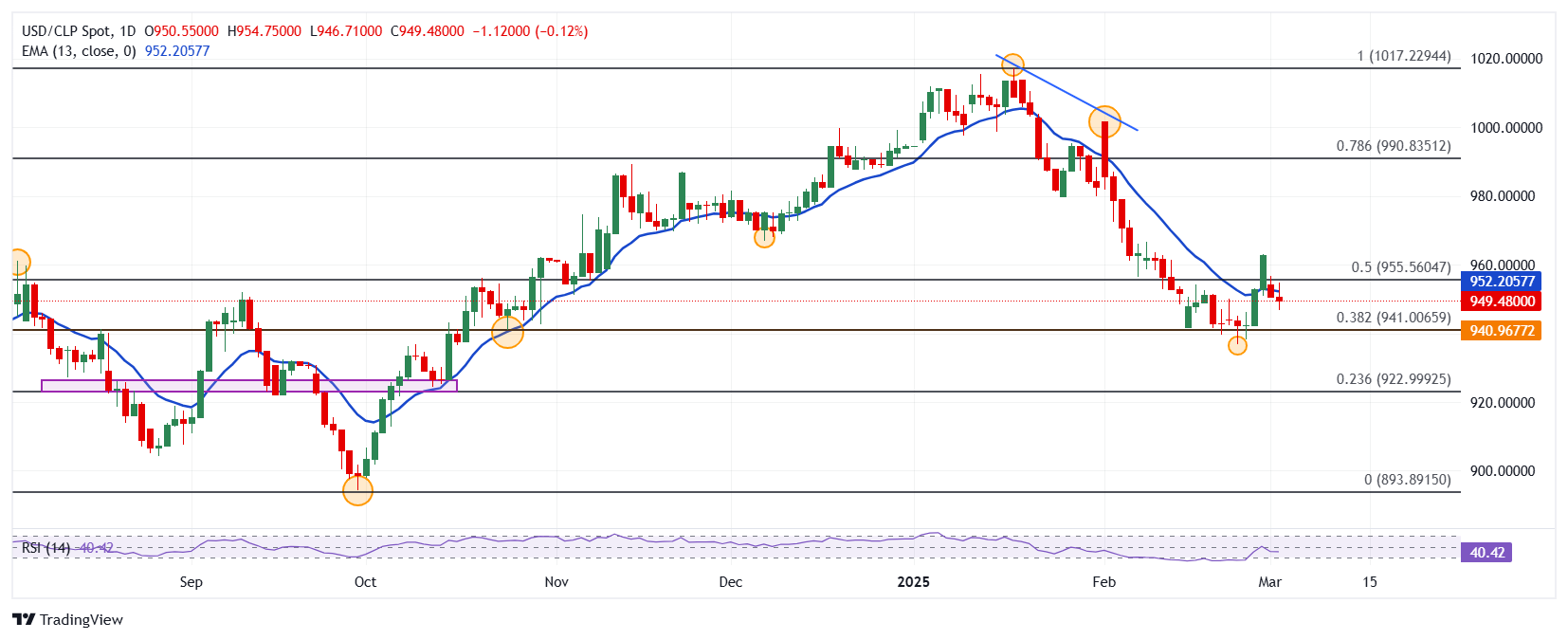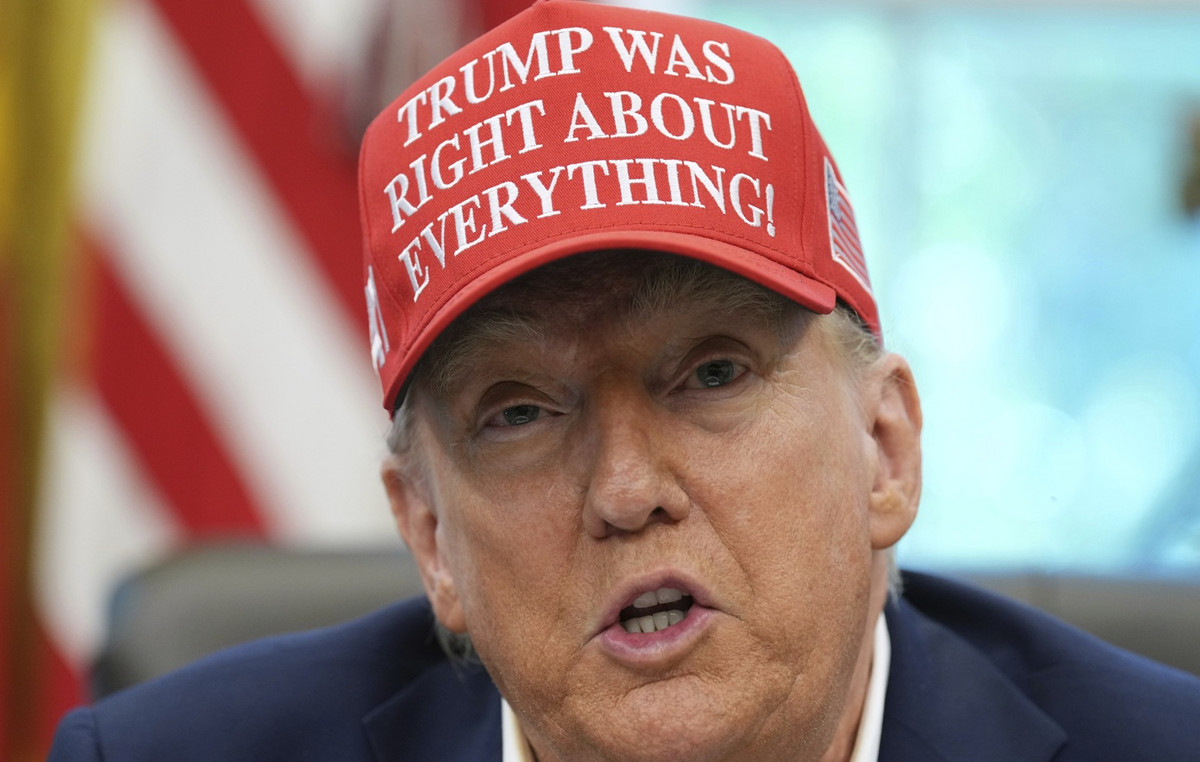- The dollar falls 0.16% daily against Chilean peso, quoting when writing about 949.25.
- The dollar index falls 0.34% today, reaching minimums not seen since December 9, 2024.
- The application of 25% tariffs to Mexico and Canada has entered into force today, causing immediate responses from its commercial partners.
- The economic agenda of today contemplates the speeches of John Williams and Thomas Barkin, members of the Fed.
The USD/CLP established a daily maximum at 954.75, where it attracted vendors that dragged parity to a minimum not seen from February 27 in 946.7. Currently, the USD/CLP operates at 949.25, losing 0.16% daily.
The Chilean peso can be seen after the drop in the dollar and the tariff imposition
The dollar (DXY) index loses 0.34% on Tuesday, reaching minimum of four months not seen since December 9, 2024 in 105.88, signing its second consecutive session downward.
The fall in the DXY is presented in a context in which the president of the United States, Donald Trump, has imposed from today, 25% tariffs on Mexico and Canada. The response of his counterparts has not been expected, Justin Trudeau, Prime Minister of Canada, announced 25% tariffs on US imports worth 30,000 million dollars. On the other hand, Claudia Sheinbaum, president of Mexico, has declared that she has a “Plan A, Plan B, Plan C and Plan D”, before this scenario, although she has not given details about it.
The Chilean weight navigates in the midst of these events with a relative appreciation against the US dollar, reaching three days, taking advantage of the fall of the DXY and the recent increase in copper prices, of which it is a strong exporter. The USD/CLP signs its second consecutive day down, operating at 949.25 at the moment, with a loss of 0.16% today.
Investors will be attentive to the statements they will offer during the day, Thomas Barkin and John Williams, members of the Federal Reserve.
Technical levels in the USD/CLP
The USD/CLP established a short -term support given by the minimum of February 25 in 936.79. The following key support is 894.25, minimum of September 30. Upwards, the closest resistance is observed in 1,001.60, pivot point of February 3.
USD/CLP daily graphics

US dollar FAQS
The US dollar (USD) is the official currency of the United States of America, and the “de facto” currency of a significant number of other countries where it is in circulation along with local tickets. According to data from 2022, it is the most negotiated currency in the world, with more than 88% of all global currency change operations, which is equivalent to an average of 6.6 billion dollars in daily transactions. After World War II, the USD took over the pound sterling as a world reserve currency.
The most important individual factor that influences the value of the US dollar is monetary policy, which is determined by the Federal Reserve (FED). The Fed has two mandates: to achieve price stability (control inflation) and promote full employment. Its main tool to achieve these two objectives is to adjust interest rates. When prices rise too quickly and inflation exceeds the 2% objective set by the Fed, it rises the types, which favors the price of the dollar. When inflation falls below 2% or the unemployment rate is too high, the Fed can lower interest rates, which weighs on the dollar.
In extreme situations, the Federal Reserve can also print more dollars and promulgate quantitative flexibility (QE). The QE is the process by which the Fed substantially increases the flow of credit in a stuck financial system. It is an unconventional policy measure that is used when the credit has been exhausted because banks do not lend each other (for fear of the default of the counterparts). It is the last resort when it is unlikely that a simple decrease in interest rates will achieve the necessary result. It was the weapon chosen by the Fed to combat the contraction of the credit that occurred during the great financial crisis of 2008. It is that the Fed prints more dollars and uses them to buy bonds of the US government, mainly of financial institutions. Which usually leads to a weakening of the US dollar.
The quantitative hardening (QT) is the reverse process for which the Federal Reserve stops buying bonds from financial institutions and does not reinvote the capital of the wallet values that overcome in new purchases. It is usually positive for the US dollar.
Source: Fx Street
I am Joshua Winder, a senior-level journalist and editor at World Stock Market. I specialize in covering news related to the stock market and economic trends. With more than 8 years of experience in this field, I have become an expert in financial reporting.







